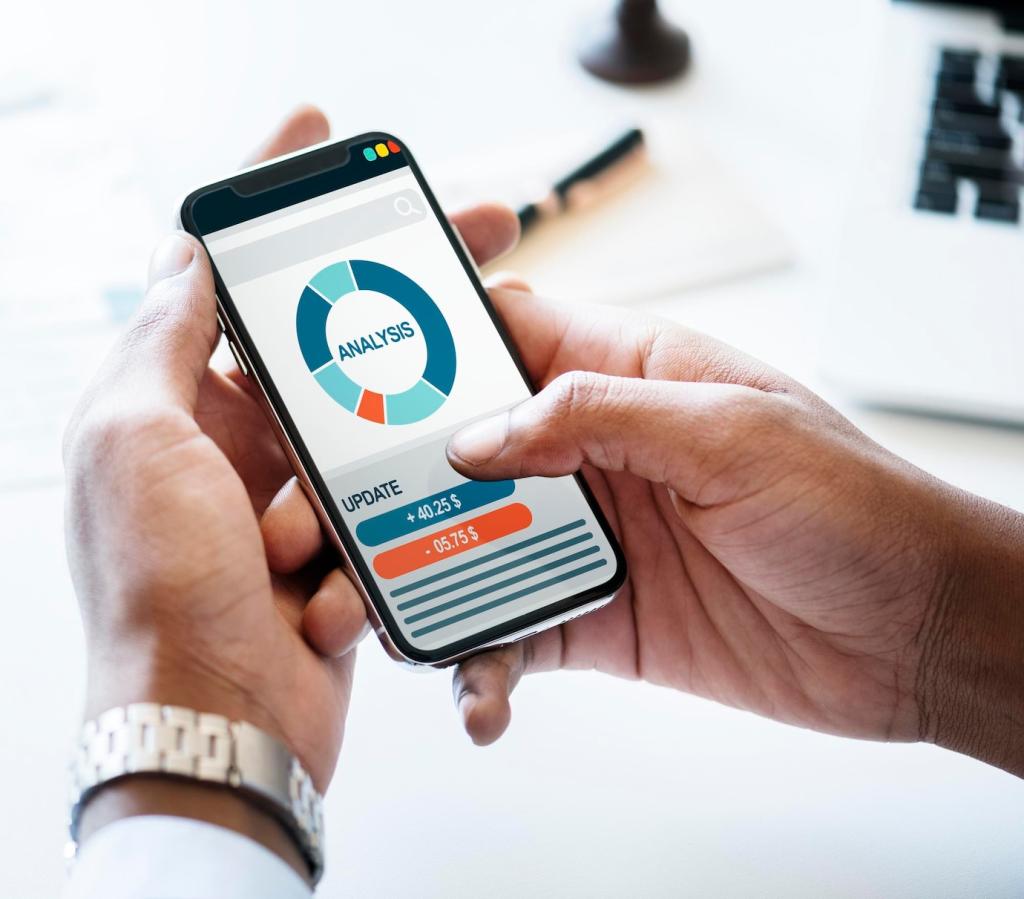Designing Tomorrow: Trends in Mobile App UI/UX Design
Chosen theme: Trends in Mobile App UI/UX Design. Explore how thoughtful motion, personalization, accessibility, and ethical choices are reshaping everyday experiences. Subscribe for practical insights and share the trend you are most excited to test.

Motion that Serves, Not Distracts
Designing with Milliseconds
Subtle animation speeds between 150 and 300 milliseconds feel quick yet understandable, especially when paired with natural easing. Use slower outgoing motions to signal completion, faster incoming motions for responsiveness, and reserve bounces for celebratory moments, not default navigation.
Haptics as Meaningful Texture
Well-chosen haptic feedback reinforces state changes without stealing attention. A soft tick on successful actions, a brief rumble for destructive confirmations, and a subtle thud on errors help users read the interface through touch, even in noisy environments.
Microcopy Paired with Motion
Pair animations with short, supportive copy that clarifies intent. A budgeting app I tested added a cheerful nudge, then gently slid savings upward; completion rates rose because motion and words told the same, reassuring story.
Personalization and Adaptive Interfaces
Dynamic Theming and System Hues
Material You and modern iOS tinting align apps with wallpapers, accessibility modes, and brand accents. Embrace adaptive color tokens, audit contrast automatically, and always allow opt-outs so users can keep a familiar visual identity across devices and sessions.

Inclusive, Accessible by Default
Touch Targets and Hit Areas
Follow platform guidance for minimum target sizes, typically around forty-eight pixels, and add generous hit slop. Spacing and clear affordances reduce accidental taps, improve one-handed use, and make complex screens feel calmer and kinder to tired thumbs.
Contrast, Color, and States
Design light and dark modes from the start, testing contrast ratios under glare and low brightness. Distinct focused, hovered, pressed, and disabled states help assistive technologies and humans alike understand what is actionable and where attention should go.
Voice, Captions, and Alternatives
Support system voice control and screen readers with clear labels and predictable navigation order. Provide captions, transcripts, and motion-reduced modes. Accessibility changes rarely hurt aesthetics; they often elevate clarity for everyone, especially in hurried, distracting, real-world conditions.
Designing for the Thumb Zone
Place primary actions within easy reach, usually near the bottom and center, and keep destructive actions separated. Evaluate reaches on different devices, test with left and right handers, and prefer progressive disclosure over endlessly deep menus.
Edge Gestures and Learnability
Gestures feel magical until users miss them. Provide soft onboarding cues, occasional tooltips, and redundant buttons for critical paths. Use haptics and subtle animations as breadcrumbs that reveal possibilities without shouting or blocking tasks with heavy-handed tutorials.
Large Screens and Foldables
Responsive layouts matter on tablets and foldables. Adopt adaptive columns, anchored bottom navigation, and drag-and-drop between panes. Test hinge occlusion, continuity during rotations, and transitions as users shift modes, preserving context without jarring resets or confusing reflows.





Type, Space, and Content-First Layouts
Variable fonts enable optical sizing, weight, and width without loading multiple files. Combine responsive type scales with line length and spacing tuned for thumbs, creating legible paragraphs that feel sturdy in bright light and late-night darkness.
Type, Space, and Content-First Layouts
Use depth to imply hierarchy rather than decoration. Soft, realistic shadows, consistent elevation, and directional lighting help users predict behavior, especially for draggable elements and sheets. Subtle parallax can guide attention without nausea when used sparingly and purposefully.
